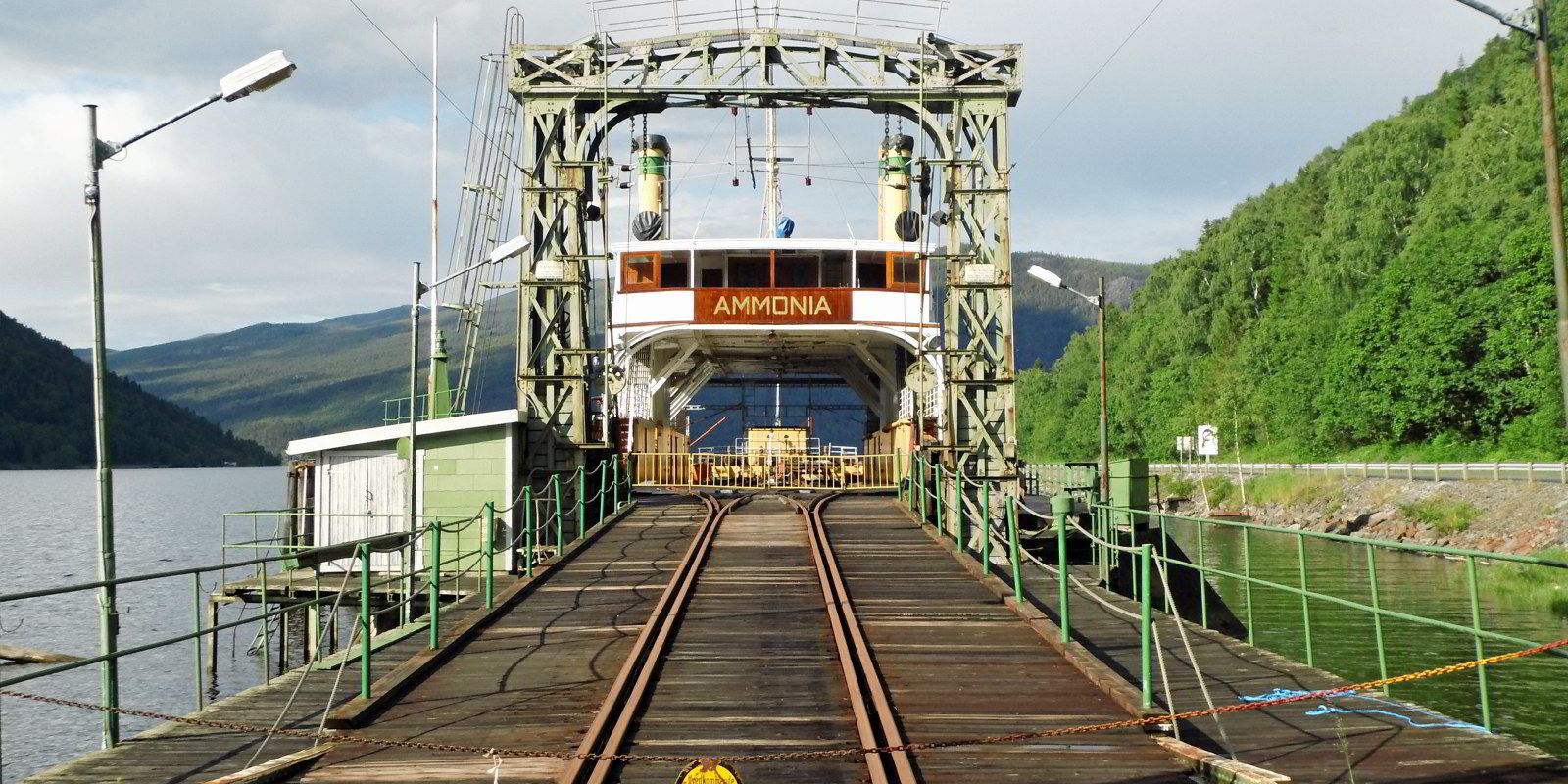Robert Tustin, a naval architect at classification society Lloyd’s Register who works as a project manager for newbuilding projects, typically gets to spend no more than two years on an assignment.
But in 2018, Lloyd’s Register chief executive Nick Brown assigned Tustin a project that he is still working on today, more than four years later. He has been working with a coalition of companies including Malaysian shipowner MISC Berhad and shipbuilder Samsung Heavy Industries to develop what could become one of the world’s first tankers powered by ammonia.
“When we started down the path of this project, we were going for fuel that didn’t exist with an engine that didn’t exist. What’s important about this project is it is quite bold in terms of its engineering,” he told the Green Seas podcast.

“It’s almost like a grand challenge — to start with nothing and then implement a zero-carbon fuel in reality, which we don’t normally do.”
The project, known as the Castor Initiative, is among a handful that are at the leading edge of efforts to tackle shipping’s greenhouse gas emission by building ships powered by zero-carbon ammonia.
Several technical experts who are working on developing ammonia technology for shipping pointed to late 2025 or early 2026 as the time when the first ships powered by this new fuel are likely to hit the water.
But even then, there will still be much more work to do before ammonia truly takes hold in shipping.
The pages of TradeWinds have been peppered in recent weeks with developments in the race for ammonia fuelled shipping. Car carrier operator Hoegh Autoliners is looking to build four large dual-fuel vessels for delivery in 2026 that will be able to run on both ammonia and conventional fuels.
Starting next year
That is made possible by expectations that MAN Energy Solutions can deliver ammonia-fuelled engines it as early as next year.
The CMB.Tech division of Compagnie Maritime Belge has signed up with another engine maker, WinGD, to add ammonia fuelling to large bulk carriers ordered in China.
Major Japanese shipowners Mitsui OSK Lines, K Line and NYK Line are all pursuing large ammonia-powered vessels.
Ammonia’s appeal is in its chemical formula: NH3. It has no carbon, and it takes up less space that hydrogen, whose low energy density is a major constraint.
Most ammonia today is made through processes that have high GHG emissions. But in the future the hope is that making green ammonia from hydrogen produced with renewable electricity in a zero-carbon way or blue ammonia with carbon capture will become more cost effective.
In fact, while green hydrogen is the holy grail of zero-carbon shipping, ammonia is a great way to carry it.
“A basic component of liquid fuels for decarbonisation is hydrogen, and the most efficient way to carry hydrogen is in ammonia,” said Tustin. “And even the hydrogen strategies of countries talk about it. So, if you look at the Australian state hydrogen strategy, they talk about export of hydrogen to Japan as ammonia.”
There are several factors that are setting the timetable for ammonia-fuelled shipping.
One is regulation. There are no global rules for using ammonia, and International Maritime Organization regulations currently discourage it. An IMO committee is working to address that.
Safety concerns
Another key factor is development of the engines by major providers like MAN, WinGD and Wartsila. And important to those efforts is addressing safety concerns, since the fuel is toxic to human health. While carrying ammonia by ship happens every day, there still challenges to overcome when it comes to using it in an engine.
But technical experts believe those challenges will be overcome.
The Castor Initiative brings together shipowner MISC Berhad, shipyard Samsung Heavy Industries, classification society Lloyd’s Register, engine maker MAN Energy Solutions and four other companies in an endeavour to build ammonia-fuelled tankers.
Compagnie Maritime Belge’s CMB.Tech has teamed up with WinGD to develop engines for newcastlemax bulkers ordered in China.
Japanese shipping giant Mitsui OSK Lines and partner Mitsui & Co have secured approval in principle from ClassNK for an ammonia-powered newcastlemax bulker.
K Line has partnered fellow Japanese shipowner NS United for an ammonia-fuelled bulk carrier of a similar size that has also won ClassNK approval in principle.
Compatriot NYK Line completed concept design in December for a capesize bulker and a VLCC that would be fuelled by LNG at first but ready for ammonia. And it is involved in a consortium that scored approval in principle last year for a vessel that would carry ammonia as a cargo and use it as a fuel.
MAN is developing engines that underpin several planned projects, including the Castor Initiative.
In a research centre in Copenhagen, the company has repurposed an existing engine to run on ammonia, and in the months ahead it plans to fire it up and launch a detailed testing programme.
2024 or 2025
MAN’s head of research and development for two-stroke engines, Brian Ostergaard Sorensen, said the company believes it will be able to deliver to a shipyard a dual-fuel engine that can run on ammonia in late 2024 or early 2025, and he said shipping companies are looking to ammonia-ready designs to be prepared for the new fuel.
“We actually strongly believe that we are able to build a safe technical system. It will be based on the experience we have from the current dual-fuel technologies,” he said. “So there we are actually quite confident, and the project we have set up is not a success unless we have a robust system that is also safe to operate.”

He said the regulatory framework for using ammonia safely is also headed in the right direction.
“The only thing, of course, that could be a challenge will depend on the speed of uptake of the technology — how fast will the transition go,” he said. “If it is more prolonged, you have more time, but if it’s shorter, the task will be bigger in the short term.”
But even if several ships are on the water that can run on ammonia a few years from now, that is just another milestone in a longer journey.
It could be 2030 before international rules for ammonia fuelling are in place, meaning projects will face a more complex approval process until then.
Another major challenge is training up vessel crews to work with ammonia on vessels.
Christos Chryssakis, a business development manager at classification society DNV, said engine makers are only working on their first iterations of ammonia engines, and each will be appropriate for specific vessel sizes.
“We’ll have one or two engines develop first. It will take some time to make sure they’re working well before the makers will invest in developing more sizes,” he said.
So if a shipping company needs an engine of a size that is not in the first wave of engine designs, it might have to wait.

But shipping will also need access to ammonia that is truly carbon-free, all the way up the production supply chain. Right now, most ammonia is essentially a fossil fuel.
There are a number of projects and proposals to ramp up supply of green ammonia and blue ammonia.
“But we’re not going to have big volumes before … some time in the early 2030s,” said Chryssakis. “The same is true for other green fuels like methanol; that means that if you want to get access to green ammonia, you will need to make an agreement with a producer, at least in the early years of this, because that’s not going to be readily available in the market.”
Read more
- Engine designer MAN sees no bottleneck for ammonia burners
- Hapag-Lloyd swings behind ammonia with pilot bunker projects in Europe and US
- Saverys’ CMB.Tech and WinGD to develop first ammonia engines for newcastlemax fleet
- MOL presses ahead with ammonia-fuelled newcastlemax bulker
- BP plots ammonia shipping and hydrogen conversion at German hub




